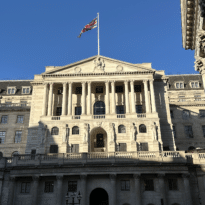This year has seen a disparity between fundamental performance and share price performance in the property market. Richard Stutley, portfolio manager at MGIM, looks at why and whether property remains an investment to consider.
Contrary to that saying, property has been anything but a safe bet so far this year: the S&P Global Property Index is up 1.9%1, positive yes but lagging far behind the MSCI All Countries World [equity] Index, up 10.4%. That is despite dividend forecasts for 2023 being revised up by 3.2%, better than the 1.4% upward revision in equity dividends – in other words the outlook for property companies has improved relative to equities so far this year, and for that investors have been rewarded with a swing of almost minus 9% in performance. Counterintuitive to say the least.
To help explain this disparity between fundamental performance and share price performance, I’ve paraphrased one of my colleagues:
‘The market is worried about write-downs to the value of assets, which poses a risk to businesses looking to refinance: higher loan-to-values (LTVs) compound the impact of an already higher base rate.’
They go on to offer some encouragement however:
‘In 2008/09, many REITs were forced to recapitalise. Since then, average LTVs have come down significantly, hence comparisons to that time are overstated. While companies in many industries are affected by the current tough economic environment, long leases (typically 3-5 years) mean property is better insulated than other sectors and hence general equities.’
A related risk preoccupying investors is funding risk. While property companies are looking less creditworthy due to the higher base rate and higher LTVs, the banks that traditionally lend to them are having problems of their own, as highlighted recently by several high-profile collapses. Here, however, I agree with our active property manager Catalyst Fund Managers, that a distinction needs to be drawn between private property companies and publicly listed ones, in which we invest. According to data compiled by National Association of Real Estate Investment Trusts2, publicly listed property companies have less than a quarter of the exposure to the office sector (which remains under pressure) of their private counterparts, at just over 5%. They are also less highly indebted on average and have more diversified sources of funding beyond the banking sector, according to Catalyst.
While all that sounds positive, we need to bear in mind that listed property companies don’t operate within a vacuum, and hence contagion from the private sector remains a risk.
Fundamentals for listed property companies are still intact. Rental growth remains high across most sectors, with the exception of offices, and even the sharp slowdown in the apartment sector (following a swift supply response) only brings rental growth back in line with its pre-pandemic norm3. With respect to balance sheets, companies are less indebted than pre 2008/09, and they have taken advantage of low interest rates to lock in cheap debt out to 2030 on average4.
The continued derating so far this year has pushed dividend yields above historic averages, implying that either something is different this time, or else current prices are attractive. One thing that is clearly different is the interest rate environment, and we note that property only looks roughly fair value when compared to the yields on offer from US Treasuries and Treasury Inflation Protected Securities (TIPS)5, although considerably better than equities.
Looking at analysts’ expectations on Bloomberg, it is striking how much growth they expect from the sector over the next 12 months.
Part of this is clearly to do with higher inflation but looking at the pricing of 12-month Treasuries and TIPS, forward-looking inflation is in fact expected to be benign. Estimates ranging between 6 and 8% growth for the next 12 months, and in excess of 4% annualised for the next 4 years6, are in stark contrast to the outcome over the past 10 years or so (dating back to April 2013). Since that time, the S&P Global Property Index has delivered dividend growth of only ~2% per annum7.
Where is this higher growth going to come from? The increased proportion of high growth subsectors in the index is obviously key – areas such as laboratory space and retail parks, which we specifically target in our portfolios. We also expect to see the lagged effects of inflation coming through, plus the strong rental growth catalysed by the aftermath of the pandemic, when a boom in demand met constrained supply at the time.
Adding all this together: fundamentals look good, in particular balance sheets which are in better shape compared to 2008/09 on average. Valuations have improved year to date but are not yet super compelling and there is likely to be an overhang from private markets.
Overall, property is still not that attractive compared to certain areas of the fixed income markets in our assessment, but it warrants a place alongside equities within our basket of growth assets
Sources: 1Bloomberg Finance L.P. (index closing levels between 30/12/2022 – 07/06/2023). 2Reit.com REITs Offer Diversification and Timeliness, 30 March 2023. 3Reit.com Core Property Sector Fundamentals Generally Solid in 4Q22, Some Evidence of Softening, 20 March 2023. 4Reit.com In 2023, REITs Are Likely to Remain Resilient to Higher Interest Rates, 15 December 2022. 5Treasury Inflation Protected Securities. 6Forecasts from Bloomberg Finance L.P. and Catalyst Fund Managers. 7Bloomberg Finance L.P. (SPBMGPTU Index; trailing 12 months dividend per share; April 2013 to May 2023).































